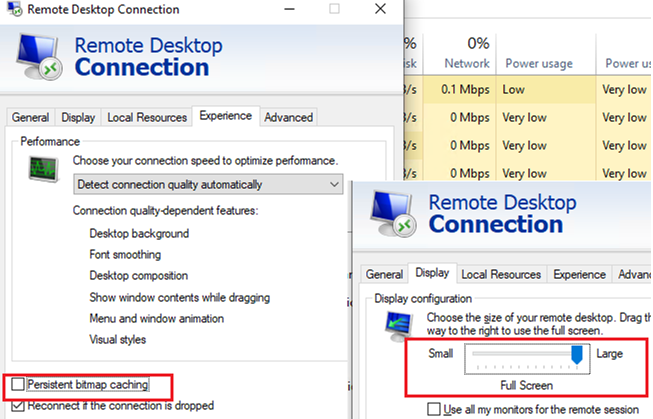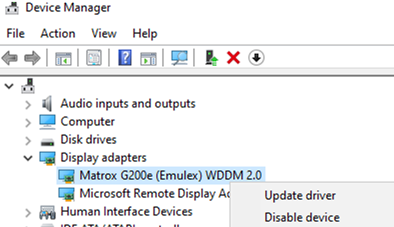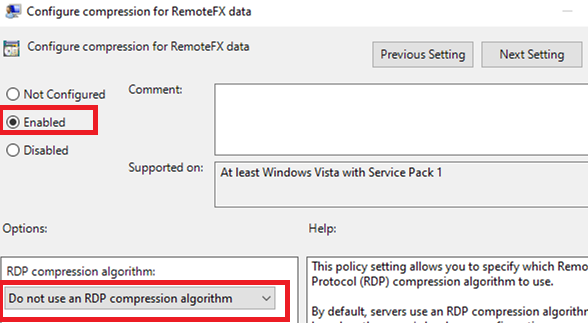Remote Desktop Connection Black Screen After Login Updated FREE
- Get link
- Other Apps
Remote Desktop Connection Black Screen After Login
Windows OS Hub / Windows Server 2019 / Black Screen While Using Windows Remote Desktop (RDP) Connection
Black Screen While Using Windows Remote Desktop (RDP) Connection
In this commodity, we volition evidence what to do if you lot see a black screen instead of a desktop when you connect to a remote Windows host via RDP. This trouble often occurs in the latest Windows x and Windows Server 2019 builds, and I decided to provide some information well-nigh typical solutions from our internal HelpDesk knowledge base.
Then you are trying to connect to a remote reckoner using a standard Windows RDP client (mstsc.exe) and after entering your credentials you see a blackness screen instead of a desktop.

There are a lot of reasons why a black screen appears in an RDP session. It is quite difficult to diagnose or categorize them.
- Press
CTRL+ALT+Terminatein your RDP session (this also allows you lot to change a password in your RDP session) and then click Cancel. This sometimes allows you to go dorsum to a desktop in an RDP session. If this doesn't help, open up the Chore Manager from this screen and run the File Explorer process (File -> Run new task ->explorer.exe-> OK); - Make sure that caching is disabled in the RDP customer settings (disable the Persistent bitmap caching option on the Experience tab) and the screen resolution supported past the remote host is used (set lower screen resolution in the Display tab or try to use the Full Screen fashion);
- Make sure that both your computer and the remote one are using the latest video commuter versions. Attempt to utilise automatic driver update (if you have non disabled it, or download and install the driver manually);
In some cases, you must ready using XDDM video driver instead of the WDDM i. To do it, open the Local Group Policy Editor (gpedit.msc) and prepare Utilise WDDM graphics brandish driver for Remote Desktop Connections = Disabled in Computer Configuration -> Administrative Templates -> Windows Components -> Remote Desktop Services -> Remote Desktop Session Host -> Remote Session Surroundings (or the same in the registry:reg add "HKLM\SOFTWARE\Policies\Microsoft\Windows NT\Terminal Services" /v "fEnableWddmDriver" /t REG_DWORD /d 0 /f). Update the Group Policy settings on your RDP/RDS host; - In Windows Server 2016 with configured RDP session timeouts, I came beyond user complaints that after trying to connect to a disconnected session information technology didn't activate correctly and they saw a blackness screen. Only a user tin stop up their RDP session (
CTRL+ALT+Terminate-> Sign out) or an ambassador can forcefully shut it (like it is described in the article Remote Desktop Services Is Currently Busy). Or configure more aggressive settings to finish disconnected user sessions; - Disable using of UDP port 3389 for RDP traffic (information technology is used together with the default RDP TCP Port 3389 on Windows Server 2012 R2/Windows eight.1 and newer). This can exist washed by enabling the Plow off UDP on client pick in local GPO on the client device (Reckoner Configuration -> Policies -> Administrative Templates -> Windows Components -> Remote Desktop Services -> Remote Desktop Connection Client) or through the registry:
reg add "HKLM\SOFTWARE\Policies\Microsoft\Windows NT\Terminal Services\Customer" /v "fClientDisableUDP" /t REG_DWORD /d 1 /f. To disable UDP protocol for the RDP traffic on the server-side, enable the GPO parameter …Remote Desktop Session Host -> Connections -> Select RDP transport protocols =Use only TCP; - Sometimes on RDS hosts, it is necessary to restart the
Audiosrv(Windows Audio) service, after which the user profile is loaded and the Desktop appears.
Microsoft offers another recommendations that do not always help, but tin can fix the source of the problem:
- Make sure that your RDP host, customer, and all network equipment between them are configured for the same MTU size;
- Disable RDP traffic compression in the local GPO editor: Configure compression for RemoteFX information =
Do not use an RDP compression algorithm(Computer Configuration -> Administrative Templates -> Windows Components -> Remote Desktop Services -> Remote Desktop Session Host); - If the trouble of a black screen in an RDP session occurs on Windows Server 2019 or Windows 10 1809+, open the Event Viewer and check Application and Service Logs –> Microsoft –> Windows –> RemoteDesktopService-RdpCoreTS. See if in that location are any errors like
'Failed GetConnectionProperty' in CUMRDPConnection::QueryProperty at 2884 err=[0x80004001]','Connection doesn't support logon fault redirector' in CUMRDPConnection::GetLogonErrorRedirector at 4199 err=[0x80004001]. If you see them, disable the URCP (Universal Rate Control Protocol) used to transfer some data between your RDP client and a server over UDP (MS-RDPEUDP2):
reg add together "HKLM\SOFTWARE\Microsoft\Terminal Server Client" /five "UseURCP" /t REG_DWORD /d 0 /f
Or you can prepare this registry parameter using PowerShell:
New-ItemProperty 'HKLM:\SOFTWARE\Microsoft\Final Server Client' -Name UseURCP -PropertyType DWord -Value 0
Related Reading
Remote Desktop Connection Black Screen After Login
DOWNLOAD HERE
Source: http://woshub.com/rdp-black-screen-windows-remote-desktop/
Posted by: howardphyan1969.blogspot.com
- Get link
- Other Apps





Comments
Post a Comment